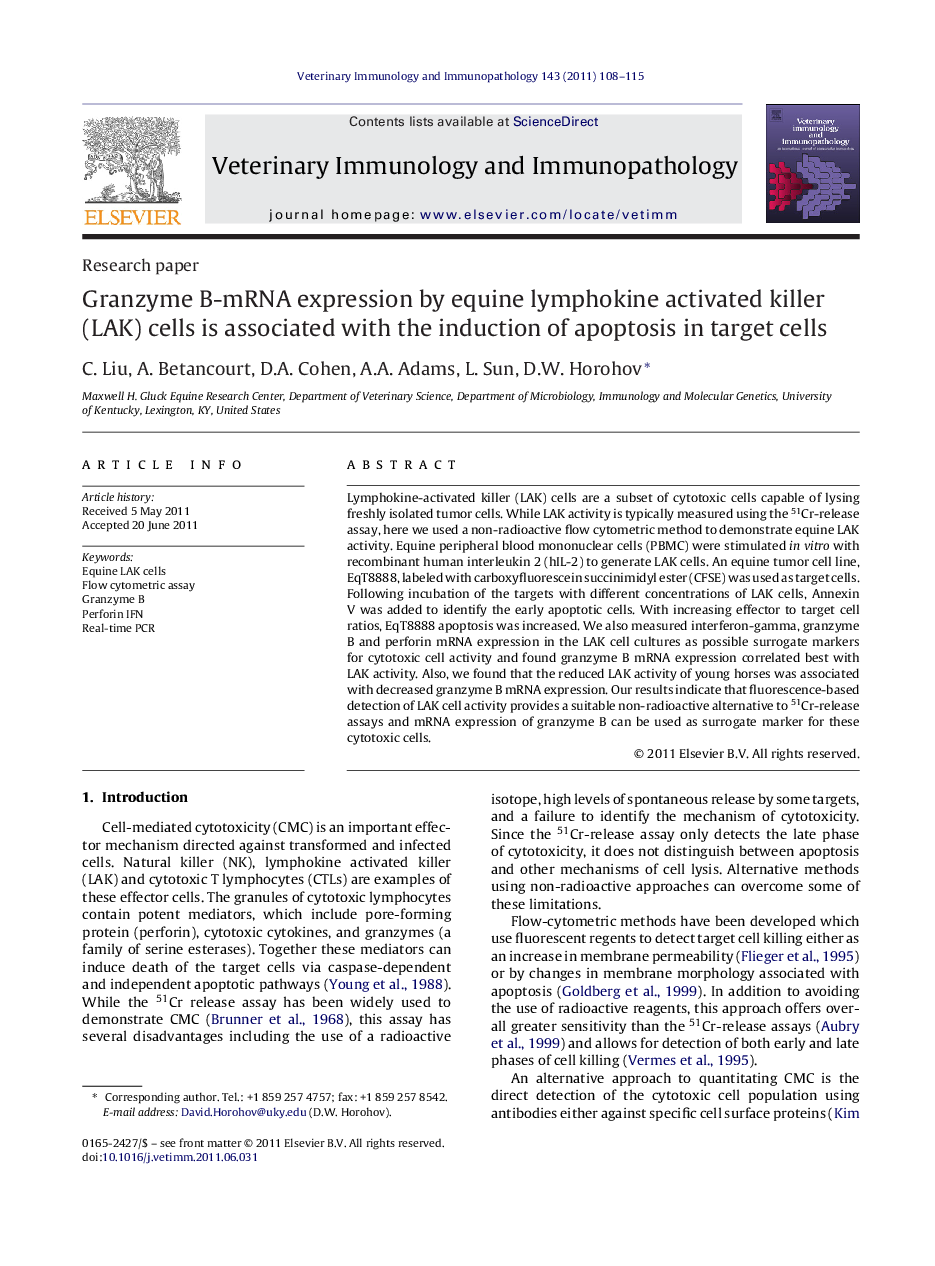| Article ID | Journal | Published Year | Pages | File Type |
|---|---|---|---|---|
| 2462137 | Veterinary Immunology and Immunopathology | 2011 | 8 Pages |
Lymphokine-activated killer (LAK) cells are a subset of cytotoxic cells capable of lysing freshly isolated tumor cells. While LAK activity is typically measured using the 51Cr-release assay, here we used a non-radioactive flow cytometric method to demonstrate equine LAK activity. Equine peripheral blood mononuclear cells (PBMC) were stimulated in vitro with recombinant human interleukin 2 (hIL-2) to generate LAK cells. An equine tumor cell line, EqT8888, labeled with carboxyfluorescein succinimidyl ester (CFSE) was used as target cells. Following incubation of the targets with different concentrations of LAK cells, Annexin V was added to identify the early apoptotic cells. With increasing effector to target cell ratios, EqT8888 apoptosis was increased. We also measured interferon-gamma, granzyme B and perforin mRNA expression in the LAK cell cultures as possible surrogate markers for cytotoxic cell activity and found granzyme B mRNA expression correlated best with LAK activity. Also, we found that the reduced LAK activity of young horses was associated with decreased granzyme B mRNA expression. Our results indicate that fluorescence-based detection of LAK cell activity provides a suitable non-radioactive alternative to 51Cr-release assays and mRNA expression of granzyme B can be used as surrogate marker for these cytotoxic cells.
